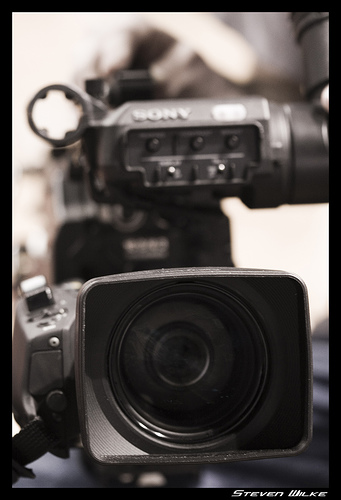March 20, 2014
“Is This a Film?” Video Within Video in the Justin Bieber Deposition
How is technology used in deposition and trials? Last week I attended Technology in Fairfax Courtrooms: Come Kick Our Tires!, a Continuing Legal Education seminar sponsored by the Fairfax Bar Association. This program interested me because real estate and construction cases are rich in photographs, plats, large drawings, sample construction materials and other visual evidence. Courts across Virginia are installing high-tech equipment for use in presenting pictures, video, audio and other media in trials. This seminar is a useful overview of the technological sea change in trial practice, including presenting audio and visual recordings of depositions at trial.
The credibility of a party’s testimony is at the heart of any trial. Sometimes parties and other witnesses will change their testimony. Lawyers use deposition records to test credibility on cross-examination. A video or audio recording can recreate the deposition vividly for the jury. Impeachment by video is not a feature of most trials because of significant time and expense associated with use of the technology.
At the courtroom technology seminar, someone mentioned pop music superstar Justin Bieber’s March 6th video deposition. This video leaked to the news media. The lawsuit alleges that Mr. Bieber’s entourage assaulted a photojournalist. I usually avoid following the news about celebrities’ depositions. I am familiar with the usual witness behavior. I’ve taken depositions of parties, experts and other witnesses. A celebrity may not be any more prepared for a deposition than an ordinary person. I watched excerpts of the Justin Bieber deposition on YouTube to see if it illustrated any new strategies.
In one excerpt, attorney Mark DiCowden shows a video of a crowd of people next to a limousine. Mr. Dicowden asked Bieber to look at the “film” on a screen behind the witness. The witness glances at the screen, turns back to DiCowden and evasively responds, “Is this a film?” DiCowden tried to focus Bieber on the video to establish a foundation for questions. As a viewer, I struggled watching the screen within a screen while following the examination. To capture Justin Bieber’s interaction with the video, the court reporter zoomed out, making both the video and Bieber smaller. If counsel tried to use this at trial, I imagine the jurors, sharing monitors, would struggle with this as well, with the added distraction of live court action. Justin Bieber’s evasive remarks and body language stand out here in what might otherwise be a disjointed use of technology. Since only excerpts are available, it is difficult to determine whether he went on to actually answer substantive questions about the video.
I wonder whether Plaintiff’s decision to incur the expense of this video deposition (and any related motions) will ultimately be useful for settlement or resolving the case in the courtroom. How will the deposition record look to the jury weighing the credibility of the witness? The Justin Bieber deposition provides some insight into use of video exhibits within a video recorded deposition. Getting an adverse witness to alternatively focus on questions and a video playing behind him is a challenge.
Even if your case does not involve celebrities, a practice run helps to prepare you for a video deposition. For example, the attorney taking the deposition could experiment with different layouts for the camera, people, screen and other visual exhibits to see how they look on replay. On the other side, the witness may learn something from viewing a video of himself answering practice deposition questions. Retain a lawyer with trial and deposition experience with evidence similar to your dispute.
featured image credit: Steven Wilke via photopin cc

